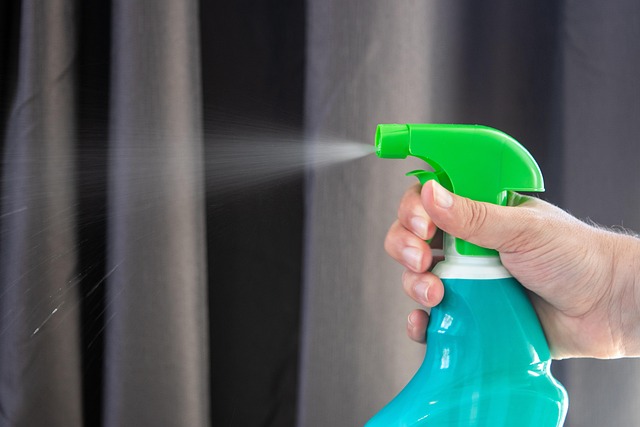Deep cleaning is a thorough sanitization and revitalization process essential for maintaining optimal hygiene in homes, offices, schools, and healthcare facilities. It involves careful planning, specialized tools (like high-performance vacuum cleaners, microfiber cloths, and non-toxic solutions), and structured procedures to ensure every corner, from baseboards to ceiling fans, is cleaned effectively. Regular deep cleaning prevents the buildup of germs, allergens, and dirt, promoting a healthier living environment. Essential tools include versatile cleaning solutions, powerful vacuums, microfiber mops, brushes, gloves, masks, pressure washers, steam cleaners, and organized storage. Specialized tools like elongated microfiber wands and compressed air cans help reach hard-to-access areas. Structured routines, scheduled calendars, natural cleaning products, and professional services enhance deep cleaning efficiency and sustainability, ultimately improving indoor air quality and overall well-being.
Uncover the secrets to achieving impeccable home hygiene with high-quality deep cleaning. This comprehensive guide explores the fundamentals, emphasizing why regular deep cleaning is an essential pillar of home maintenance. Discover key components for an effective routine and learn about specialized tools to tackle even the most stubborn spots. We’ll navigate strategies for hard-to-reach areas and establish a sustainable schedule. Additionally, uncover the advantages of professional services for a truly revitalizing deep clean.
Understanding High-Quality Deep Cleaning: The Basics

High-quality deep cleaning involves a thorough and meticulous approach to sanitizing and revitalizing spaces, going beyond routine maintenance. It’s not just about wiping down surfaces; it encompasses a comprehensive process that targets every nook and cranny, from baseboards to ceiling fans, and includes deep scrubbing, disinfection, and restoration. This method is especially crucial in high-traffic areas like offices, schools, and healthcare facilities where maintaining a hygienic environment is paramount.
The basics of deep cleaning include planning and preparation, gathering the right tools and products, and following a structured procedure. It often requires moving furniture, accessing hard-to-reach areas, and paying close attention to details. The use of specialized equipment like vacuum cleaners with HEPA filters, steam mops, and powerful disinfectant solutions enhances efficiency and ensures deep cleaning that goes beyond surface level.
Why Regular Deep Cleaning is Essential for Home Hygiene

Regular deep cleaning is a vital component of maintaining optimal home hygiene and preventing the buildup of germs, allergens, and dirt. It goes beyond routine surface cleaning to thoroughly disinfect and sanitize hard surfaces, fabrics, and appliances. In today’s world, where health concerns are ever-present, deep cleaning allows for the removal of microscopic particles that can cause allergies, respiratory issues, and the spread of illnesses.
By incorporating deep cleaning practices into your regular home maintenance schedule, you create a healthier living environment for yourself and your family. It helps to eliminate hidden germs and contaminants that may be lurking in various areas of your home, such as kitchen counters, bathroom fixtures, and even your bedding. This proactive approach ensures a clean and safe space, contributing to overall well-being and peace of mind.
Key Components of an Effective Deep Cleaning Routine

A high-quality deep cleaning involves several key components to ensure a thorough and effective routine. First, deep cleaning requires the right tools and products. Investing in high-quality equipment such as powerful vacuum cleaners, microfiber cloths, and non-toxic cleaning solutions is essential for removing dirt, dust, and grime from every corner of your space. Regularly replacing or sanitizing these tools prevents the spread of bacteria and ensures optimal cleanliness.
Additionally, a structured plan is crucial. Breaking down the cleaning process into manageable tasks, room by room, allows for a systematic approach. This not only saves time but also ensures that no area is overlooked. Prioritizing high-touch surfaces like doorknobs, light switches, and countertops, as well as hard-to-reach areas like baseboards and window sills, guarantees a complete deep clean.
Tools and Equipment for Achieving Spotless Results

Deep cleaning requires the right tools and equipment to achieve spotless results. Begin with high-quality, heavy-duty cleaning solutions tailored for various surfaces like floors, countertops, and walls. Invest in versatile tools such as a powerful vacuum cleaner with an attachment for corners and tight spaces, a microfiber mop or sponge for dusting and cleaning hard surfaces, and a sturdy brush for scrubbing tough stains. Don’t overlook protective gear including gloves, eye protection, and a mask to ensure safety while handling chemicals.
For deep cleaning, consider additional equipment like a pressure washer for exterior surfaces, a steam cleaner for sanitizing carpets and upholstery, and a sink or bucket with clean water and soapy solutions for washing items like kitchenware and bathroom fixtures. Proper organization of these tools and supplies is key to efficient cleaning. Store them in easily accessible locations and keep them well-maintained to ensure longevity and optimal performance during deep cleaning sessions.
Strategies for Deep Cleaning Hard-to-Reach Areas

Deep cleaning hard-to-reach areas requires tailored strategies to ensure no corner is left unclean. One effective method is using elongated or flexible tools designed for narrow spaces, such as microfiber wands or brush attachments for your vacuum cleaner. These tools can navigate around fixtures, under furniture, and into tight crevices, removing dust and debris effectively.
Another strategy involves employing a squeegee or cloth to clean vertical surfaces like window sills, baseboards, and doorframes. For smaller openings or hard-to-reach nooks, consider using compressed air cans to dislodge built-up dust and dirt. Regular dusting with a dry microfiber cloth prepares these areas for deep cleaning, ensuring that any liquid cleaner or detergent can reach its intended targets without immediately drying up or becoming trapped.
Creating a Sustainable Deep Cleaning Schedule

Maintaining a clean and healthy living space is essential, and regular deep cleaning plays a pivotal role in achieving this. To ensure sustainability, it’s crucial to establish a well-planned schedule tailored to your needs. Start by identifying high-traffic areas like kitchens and bathrooms, as these require more frequent attention. Allocate specific days for deep cleaning these zones, ensuring you tackle tough stains and sanitise surfaces thoroughly.
Consider creating a weekly, bi-weekly, or monthly calendar dedicated to deep cleaning tasks. This systematic approach makes it easier to stay on top of things without feeling overwhelmed. Incorporate natural cleaning solutions where possible, which not only benefit the environment but also contribute to a healthier indoor atmosphere. Regularly reviewing and adjusting your schedule will help you maintain a pristine living space while conserving time and resources.
Benefits of Professional Deep Cleaning Services

Professional deep cleaning services offer numerous benefits that can transform your living or working space. One of the primary advantages is the extensive reach and meticulous attention to detail. Trained professionals use specialized equipment and eco-friendly products to scrub hard-to-reach areas, eliminate stubborn stains, and dust surfaces not touched in months. This ensures a deeper clean than what most DIY methods can achieve.
Moreover, hiring experts saves you time and effort. Instead of spending your weekends scrubbing, you can focus on enjoying your free time or attending to other priorities. Professional cleaners also bring their own supplies, minimizing the cost and hassle of purchasing cleaning materials. With a fresh, sanitised environment, improved air quality, and reduced risk of allergen build-up, these services contribute to better health and well-being for all occupants.
